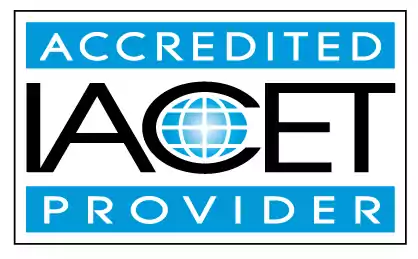Identify activities related to communicating schedules with parents, forms and permissions
Discover effective strategies for communicating schedules, forms, and permissions with parents in early childhood education and child care centers. Learn how to identify and implement age-appropriate activities that promote communication and engagement with children. Enhance your understanding of best practices by exploring real-life examples of suitable activities for different age groups.Trainings incorporating this outcome
Age group
CDA Subject Areas
Proficiency Level
Topic Areas
45 hours courses
Related Outcomes
- Identify appropriate practices for identify and demonstrate an children: Identify examples of appropriate activities for different ages
- Identify strategies to communicate with families & increase parent involvement
- Identify appropriate practices communicable diseases/illnesses and immunizations and their schedules in child care setting
- Identify indoor activities to plan for infants and toddlers during inclement weather.
- Identify the difference between teacher-/child-directed activities.
- Identify ways to help parents and infants/toddlers handle separation and attachment.
- Describe nonverbal communication as it relates to coaching and mentoring.
- Identify activities that promote emergent learning and development.
- Identify strategies for effective communication with families
- List recommended feeding schedules and identify strategies for introducing new food for children birth through age three.
- Identify theory and theorist in relation to child development.
- Demonstrate communication skills that enable intercultural communication, including effective listening skills
- Define sedentary activities, including screen time, and their impact and identify time limits per day
- Identify parenting styles and the influence those styles have on child development
- Identify recommended medical and immunization schedules for children birth through age three
- Identify the appropriate forms and procedures for reporting child abuse and neglect
- Identify essential elements for effective communication with school-age children.
- Demonstrate an understanding of the information that should be communicated regularly with staff, parents, and the community
- Identify appropriate practice for the identification, prevention, and treatment of communicable diseases in childcare.
- Define self-esteem and identify how it relates to art.
Related Articles
- Building Strong Partnerships: Effective Communication Between Teachers and Parents
- ChildCareEd's Pre-Conference Form: A Vital Tool for Successful Parent-Teacher Conferences
- Communicating with Parents by Writing the Perfect Newsletter
- St. Patrick’s Day Activities for Kids: Fun, Educational, and Easy Ideas for Parents & Teachers
- Turkey Trot and Tumble: Gross Motor Activities to Keep Little Turkeys Moving this November
- The ABCs of ECE: Why Childcare Education Courses Are the Ultimate Parenting Hack
- The Gross (Motor) Truth: 10 Gross Motor Games for Active Classroom Fun
- National Read a Book Day: Engaging Reading Activities to Spark a Love for Stories
- Helping Kids Make Friends: A Guide for Parents
- The Thankfulness Tree: A Fun, Hands-On Thanksgiving Activity for Little Learner
- Sep 1 is National No Rhyme (Nor Reason) Day: Rhyming Fun & Playful Language Activities
- World Kindness Day: Inspiring Activities to Promote Compassion and Kindness in the Classroom
- Picky Eater Solutions from the Playground: How Active Play Influences Kids' Eating Habits
- New Year, Fewer Tantrums: Tips for Building Strong Parent-Educator Partnerships in 2025
- How to Create Effective Daily Reports for Parents
- Bridging Generations: Creative Activities to Celebrate National Senior Citizens Day with Kids
- Snow Much Fun: Winter Sensory Activities to Enhance Child Development
- How to Create and Implement a Visual Schedule for Your Preschool Classroom
- Seasonal Changes and School Prep: Adapting to Weather and Activities
- A 9-Hour Communication Course for Childcare Professionals
 4.5 CEUs
4.5 CEUs